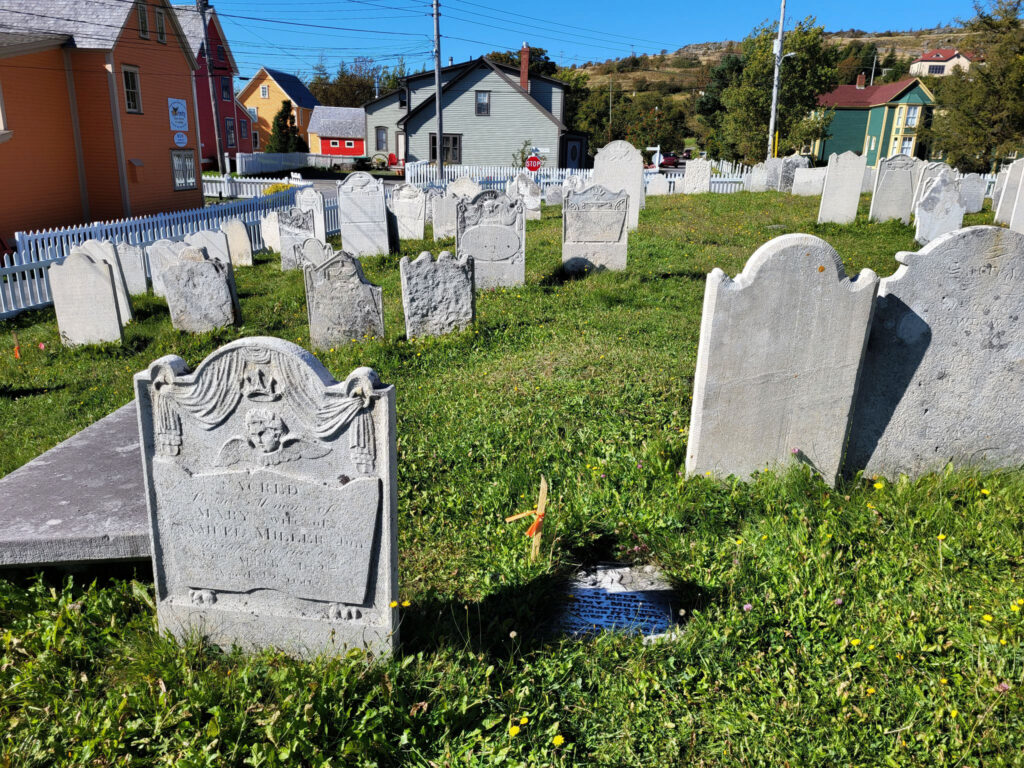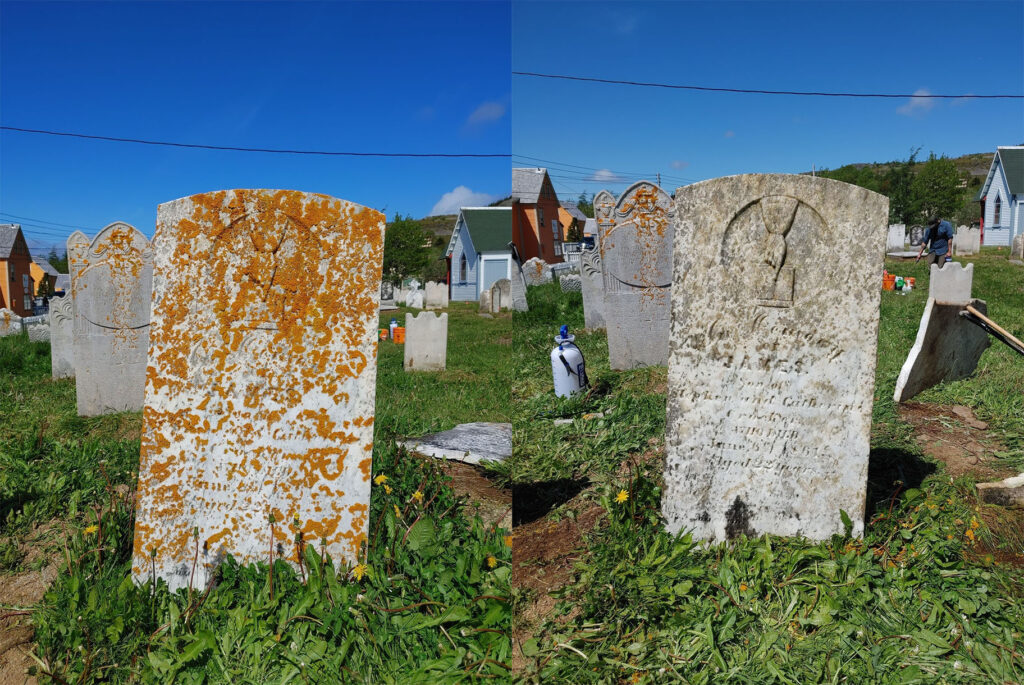Preservationists have been working on the project since last May.

Chad Feehan
Kicker
Nearly a year after beginning the work, Black Cat Cemetery Preservation is close to finishing the restoration of St. Paul’s Anglican Church cemetery.
Using careful and specific methods of restoration, Robyn Lacy and Ian Petty began the process of up righting fallen gravestones and re-finishing the surfaces last May. They have only a few left to go when they make their final trip out to the community this June.
Over time, graveyards fall into disrepair as they are constantly exposed to the elements and the shifting nature of the soil. Some have sunk below the lawn itself, unlikely to see the surface again.
“By the time we got to the back of the site we were cleaning these stones that had never been cleaned,” said Petty.
According to church records, the graveyard was in use between 1731 and 1888. The duo said the oldest grave they have found so far dates back to October 17, 1742.
Petty says spending time with the stones has a humanizing effect that puts a name to something that can otherwise feel nameless.
“It changes from a park of anonymity to a sculpture garden, but every sculpture has a name…it’s a living document,” said Petty.
For Lacy, restoring cemeteries is more than just landscape beautification.
“In a lot of cases the gravestone is the only historic documentation we’re gonna have for some people,” said Lacy. “It’s cool to be able to keep them around for a little longer.”
Though the total number of gravestones Lacy and Petty will have restored by the end of the project is 188, it is estimated there are over 2,100 bodies in the cemetery. Long after the wooden markers rotted away, written records are the only proof these people ever existed.

John August is one such person in the church records. August was a Beothuk captured by settlers as a child, and named for the month he was taken from his family. No record of his real name exists, nor is it known where in the cemetery he is buried.
“You see that in 17th century and 18th century sites like New England and other parts of areas that had colonial settlements,” said Lacy.
The vice-president of the Trinity Historical society is Kevin Toope. The society was inspired to commission Black Cat Cemetery Preservation to do the work after Toope and Ian Morris, another member of the society, took note of the state of the place during an afternoon stroll.
•Those who came before us
•New podcast explores Newfoundland’s underground rock and roll history
Toope is passionate about the preservation of Trinity’s history and its documentation. For him it is important to keep history alive for future generations.
“We’re hoping with this work that Robyn and Ian have done to preserve these stones for another hundred years,” said Toope.
In order to promote the project and the fundraising necessary for its completion, the society advertised over social media. The campaign raised more than $35,000. The campaign also put Toope in contact with people from all over the world with ties to Trinity.
“We expanded on a lot of the information that we had,” said Toope.
The historical society is proud of the work that Petty and Lacy have accomplished, and hope more restoration efforts can be carried out in the future. Toope says the best praise they’ve received is from the public.
“A lot of the tourists would be amazed they were doing this.”
Trinity isn’t the only graveyard Petty and Lacy will be working on this year. Every cemetery in Greenspond is set to get the full Black Cat Cemetery Preservation treatment later this year, in what will become a multi-year project.

Be the first to comment